Overview
Every year on October 1st, the Centers for Medicare & Medicaid Services (CMS) updates to the ICD-10 code list. This means that some ICD-10 codes that were valid this year will not be valid starting on 10/1. Most of the time, this is just a code becoming more specific. For example, “F50.01 Anorexia Nervosa, restricting type” will now require another digit to specify the severity, such as “F50.010 Anorexia Nervosa, restricting type, mild”. CalMHSA has reviewed the changes coming 10/1/24 and created a summary, which can be found here: Notable ICD-10 Code Changes for FY 2025.
What this means is that if you may have clients who have diagnosis documents or problem lists that will include ICD-10 codes that are going away. You’ll need to update these records. You don’t need to update all client records, only the ones that will be impacted by the change.
How to Find Out What Records Need to Be Updated
CalMHSA has created a list page where a user can view all records that have an ICD-10 code that will no longer be valid during a given fiscal year. This list page is CDAG’d, meaning that you will only see records that are associated with a program that is within the CDAG you’re logged in under.
This list page searches all active problems on a client’s problem list, meaning a problem that does not have an end date. This list page also searches for all of the most recent diagnosis documents for every program the client is open to, meaning in requested or enrolled status. This means that when you update one of these records by end-dating a problem or creating a new diagnosis document for a program, that record will be removed from the list page.
This list page can be used by clinical staff to determine what client records need to be updated to address the CMS ICD-10 code changes. Follow the steps below to find out what records will need to be updated.
- Navigate to the “CalMHSA Annual ICD10 Changes” list page.
- Click on the Search icon.
- Type in “CalMHSA Annual ICD10 Changes” in the search bar.
- Click to select “CalMHSA Annual ICD10 Changes (Administration)” from the search results.
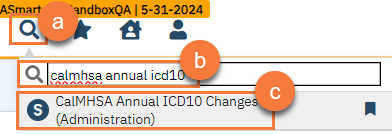
- By default, the list page will query the most recent fiscal year. To confirm, select the Fiscal Year and click Apply Filter. You can also search for records within a date range. If a diagnosis document has more than one (1) ICD-10 code that will be deactivated, this will still show as a single record, as the diagnosis document will only need to be updated once. The Program column indicates what program the record is tied to, and the Assigned Staff column is the Program Assigned Staff, which CalMHSA recommends using to track required documents for a specific program.
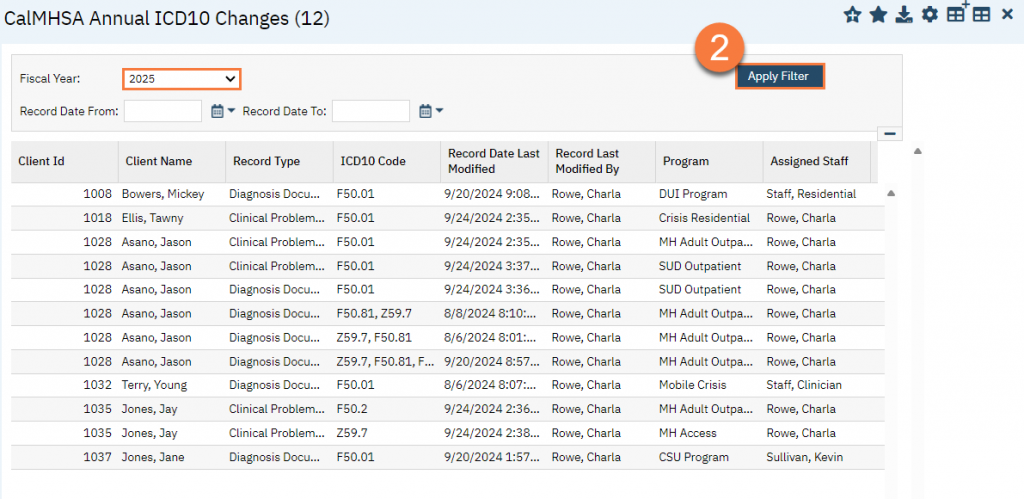
How to Update a Diagnosis Document
To address an issue with a diagnosis document, you’ll need to create a new diagnosis document for that program. See the Diagnosis section on the Clinical Documentation page for more information.
- Make sure when you’re creating a new diagnosis document that you change the effective date to 10/1. This will ensure that there are no billing issues.
- Delete any old ICD-10 codes by clicking on the Delete (X) icon.
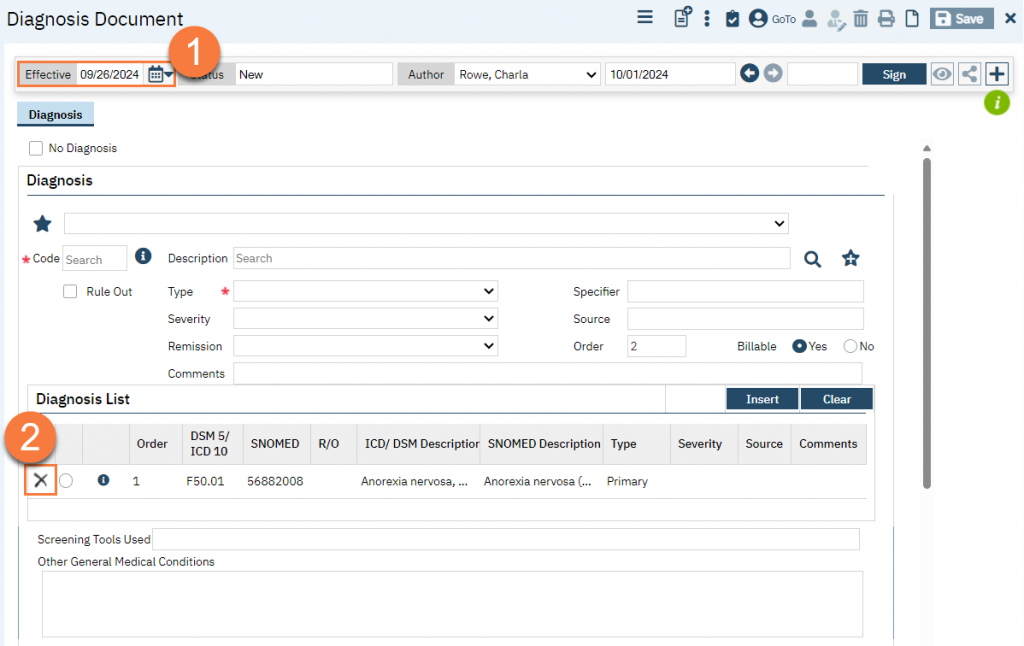
- Insert the new ICD-10 code. CalMHSA recommends adding the reason for the change in the Comments field. This will help justify the reason for the effective date of the document not matching the signature date.
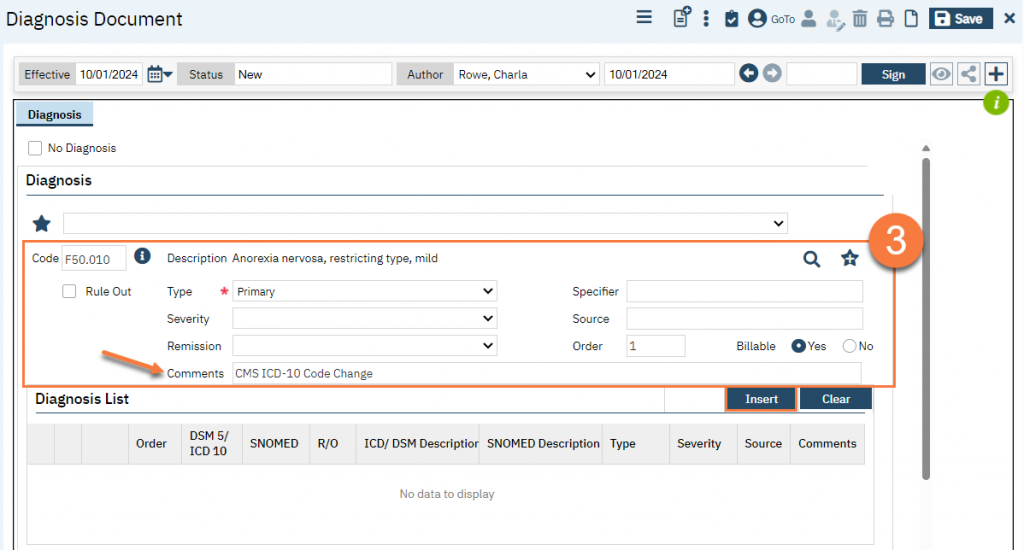
- Once you’ve made all the necessary changes, click Sign.
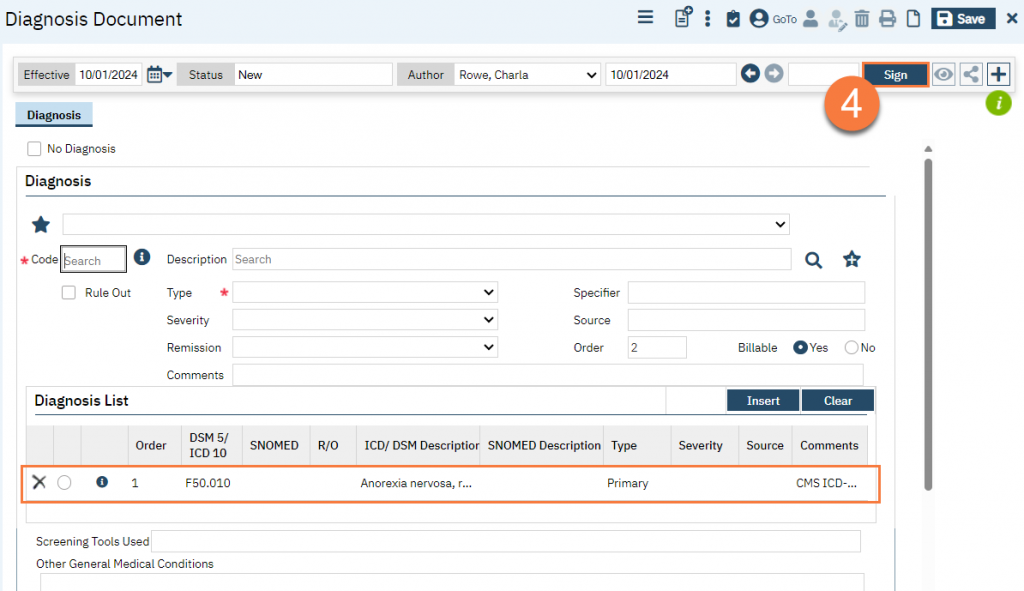
How to Update a Problem List Entry
To address an issue with a problem on the problem list, you’ll want to end-date any old ICD-10 codes and add the new ICD-10 code. You’ll have to do this after 10/1, as you cannot use a future date when entering a problem.
You can edit the problem list in a number of places, though the easiest is in the progress note. See the Problem List section on the Clinical Documentation page for more information.
- Add an end date to any problems with an ICD-10 code that is no longer be valid.
- Select the problem you want to edit.
- Enter “9/30” in the “End Date” field.
- Click Modify.
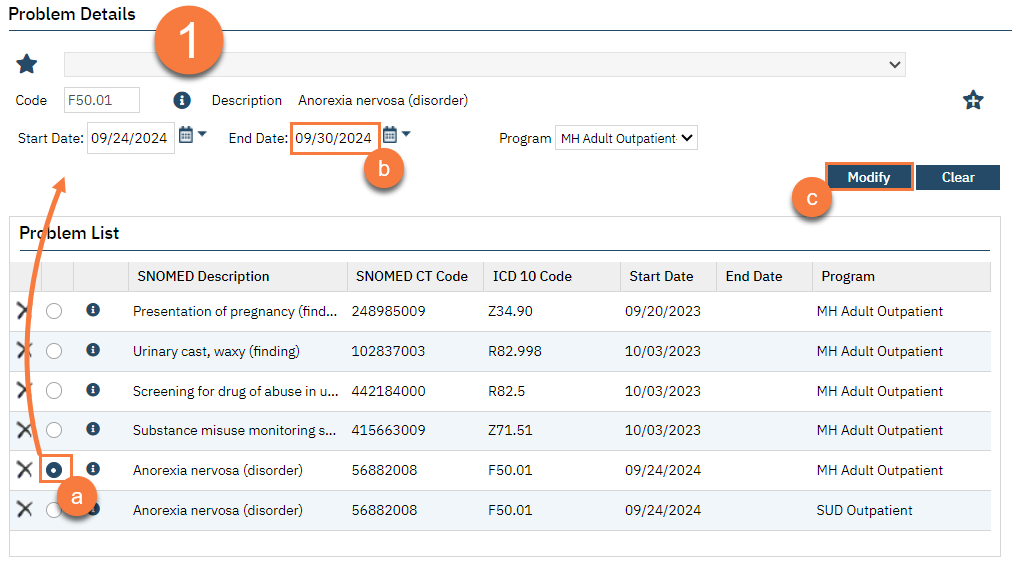
- Add a new problem record with the new ICD-10 code.
- Enter “10/1” in the “Start Date” field.
- Make sure to enter your program.
- Click Insert.

- If you’re entering this in a note, the system will automatically save this upon you signing your note. If you’re entering this in the Client Clinical Problems screen, make sure to click Save before exiting.
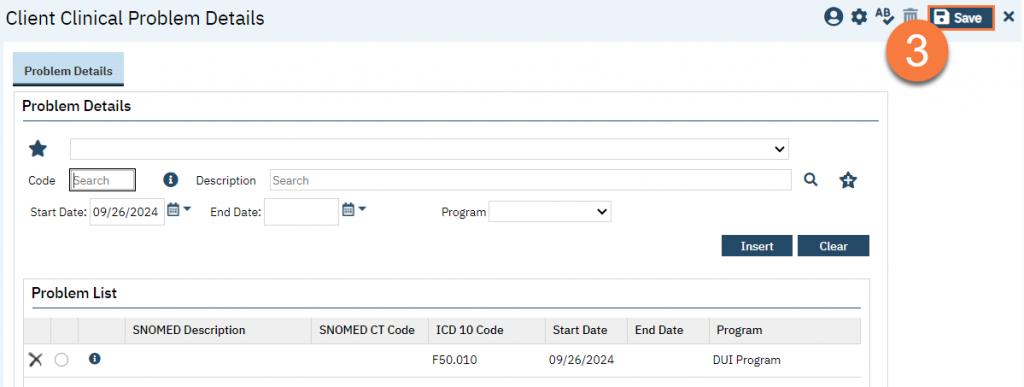
Updated 9/30/24
